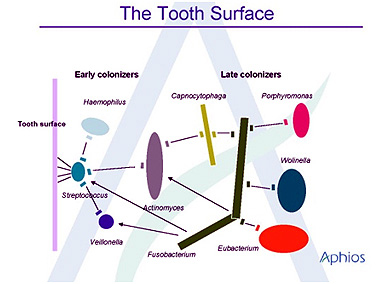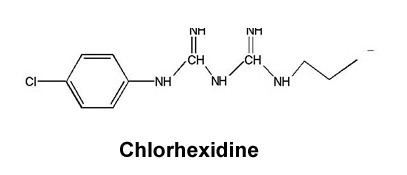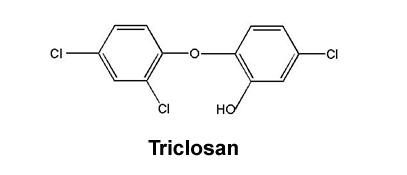An anti-plaque compound, discovered from screening marine microorganisms against a suite of microbes responsible for gingivitis, caries and juvenile periodontitis
Gingivitis – A Serious Healthcare Problem
 Epidemiological surveys indicate that about 50% of the adult population of the United States has gingivitis, which can lead to life-threatening illnesses, including heart disease. Gingivitis is characterized by gingival inflammation and/or bleeding and is caused by plaque at and under the gingival margins.
Epidemiological surveys indicate that about 50% of the adult population of the United States has gingivitis, which can lead to life-threatening illnesses, including heart disease. Gingivitis is characterized by gingival inflammation and/or bleeding and is caused by plaque at and under the gingival margins.
Most people brush their teeth; toothbrushes, however, cannot effectively remove plaque at or under the gum line. Floss is effective at removing plaque in difficult-to-reach locations; however, only about 20% of the US population uses floss. In teeth that have not been adequately cared for, gingivitis and root caries can lead to systemic infections resulting from the transport of bacteria into the circulatory system. Possible complications include endocarditis, often a precursor to heart attacks.
Evidence-based research has shown that the accumulation of oral biofilms on the teeth, commonly known as dental plaque, is critical to the etiology of these diseases. Chemotherapeutic agents capable of modulating plaque development hold the promise of reducing the incidence of caries and gingivitis. The control of plaque development is therefore important for the general health and well-being of an individual. An anti-plaque product that is effective and substantive against oral biofilms will have significant market potential in the US and internationally.
Anti-Gingivitis Compounds
Most anti-gingivitis compounds, e.g. triclosan, chlorhexidine and fluorine, are halogenated, i.e. contain chlorides or fluorides.
A Natural Alternative Solution - Marine Microorganisms
Marine microorganisms, which can generate compounds by integrating halogens such as fluorine and chlorine, are thus an important resource for the discovery of potentially useful anti-plaque compounds.
Marine microorganisms are a unique source of novel genotypes and chemical entities, which can generate compounds that integrate halogens such as chlorine and bromine. Marine microorganisms, because of their intrinsic capability to metabolize halogens, can thus be an important resource for the discovery of bioactive secondary metabolites and compounds with antimicrobial, anti-cariogenic and anti-plaque forming properties.
Unique Marine Microorganism Library
We have developed a unique collection of marine microorganisms isolated from the following diverse sources:
- Marine invertebrates (including bryozoans, sponges, corals, and tunicates)
- Deep-sea sediments and shallow mangrove swamps

- Hypersaline ponds
- Hydrothermal vents
- Marine vertebrates (i.e., fish and shark)
- Tropical and temperate oceans
- Plants (including macroalgae)
Isolation of Bioactive Compounds
Marine microbes are first fermented by methods that mimic the natural saline marine environment in order to enhance isolation of bioactive compounds.

The microorganisms are fermented in at least four different saline media designed to maximize the diversity of secondary metabolites and enzymes. The media are high or low in particular nutrients, specifically carbon and nitrogen. Carbon sources are glucose, glycerol or sodium acetate. Nitrogen sources are peptone, yeast extract and beef extract.
Marine fermentation media are prepared in artificial sea water.
Asterias™
Based on the screening studies of marine microorganism extracts against three orally relevant plaque microorganisms – Actinobacillus actinomycetemcomitans, Actinomyces viscosus, and Streptococcus mutans, we identified a marine microorganism, APP-214, with excellent inhibitory and bactericidal activity.
The orally bioactive compound was isolated and purified by chromatographic techniques, and the compound was identified by mass spectral and proton NMR analyses.
We further tested the purified compound by both MIC and MBC against three orally relevant microbes and wild strains and obtained biological activities comparable to known anti-plaque compounds (triclosan and chlorhexidine).
This compound, Asterias™, can be further enhanced by medicinal chemistry to maximize effectiveness and substantivity against orally relevant microorganisms.
This research was funded in part by the National Institute of Dentistry and Craniofacial Research (NIDCR), National Institutes of Health (NIH) through a Small Business Innovative Research (SBIR) grant.


